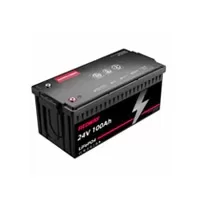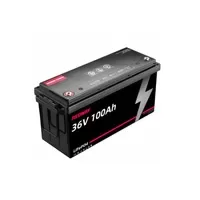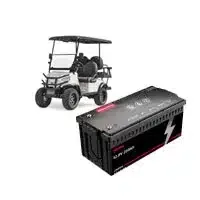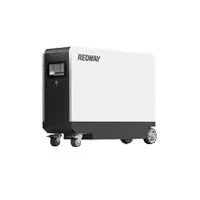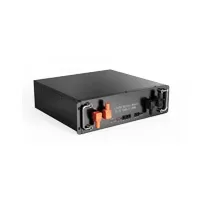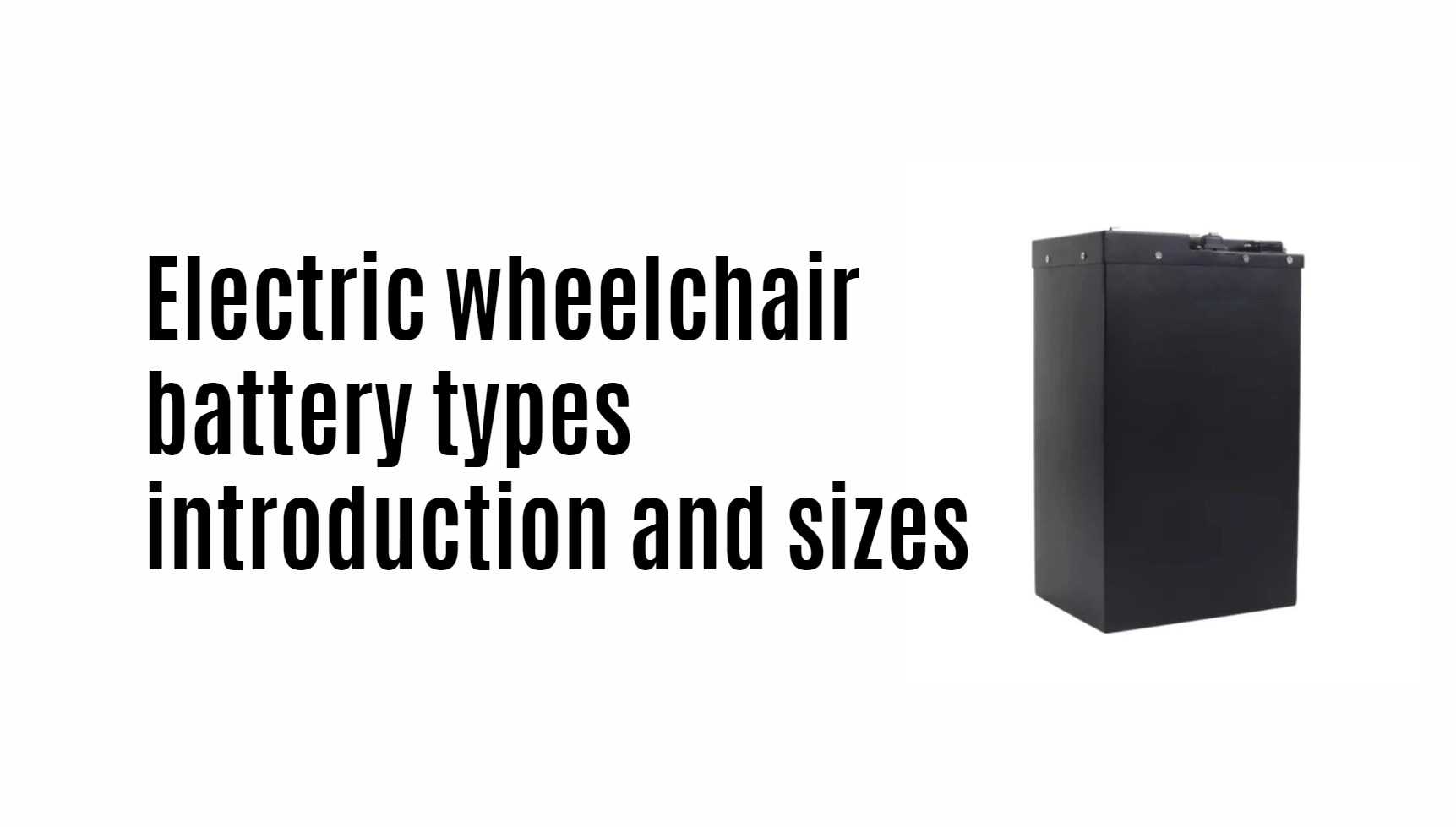Electric wheelchairs have revolutionized the way people with mobility challenges move around. They are now more accessible, comfortable, and convenient than ever before. One of the critical components that make electric wheelchairs possible is the battery. Without a good battery, your wheelchair won’t be able to perform as you need it to. In this blog post, we will discuss different types of batteries for electric wheelchairs and how to choose the right one for your needs. We’ll also cover some tips on maintaining your electric wheelchair’s battery so that you can enjoy maximum performance from your device. So let’s dive in!
Different types of electric wheelchair batteries
There are several different types of batteries used in electric wheelchairs. The most common types are lead-acid, gel cell, and lithium-ion batteries.
Lead-acid batteries have been around for a long time and are the most affordable option. They’re also incredibly reliable and can withstand extreme temperatures. However, they tend to be heavy and bulky, which can make them challenging to transport.
Gel cell batteries are similar to lead-acid but don’t require as much maintenance. They’re ideal for people who use their electric wheelchair frequently because they can handle deep discharges without being damaged.
Lithium-ion batteries are the newest type of battery technology used in electric wheelchairs. They’re lightweight, compact, and offer longer battery life than other options. However, they tend to be more expensive than other types of batteries.

When choosing a battery for your electric wheelchair, it’s essential to consider factors such as weight capacity requirements, frequency of use, and how far you need your chair to go on a single charge. It’s always best to consult with an expert or manufacturer before making a final decision on which type of battery is right for you.
How to choose the right battery for your electric wheelchair
Choosing the right battery for your electric wheelchair can be overwhelming, but it’s an important decision that affects the performance and lifespan of your mobility device. Before making a purchase, consider the following factors to ensure you choose the best battery for your needs.
Firstly, evaluate how long you typically use your wheelchair each day and what activities you use it for. This information will help determine the capacity or amp-hour rating needed in a battery. For example, if you have a busy schedule and rely on your chair heavily throughout the day, then choosing a higher-capacity battery would be ideal.

Another factor to consider is weight. Electric wheelchair batteries come in different sizes and weights, so ensure that you choose one that works well with your mobility needs without adding unnecessary bulk.
Look at maintenance requirements such as charging time and frequency of replacements. Research which types of batteries require less maintenance over time since this can save money in replacement costs down the line.
By taking these factors into account when selecting an electric wheelchair battery type and size; users are sure to find one that meets their specific needs while enabling them to stay active and independent longer!
Battery Sizes
Power wheelchair batteries can be compared to gas tanks in vehicles, as they provide the energy required to operate the electric wheelchair. These batteries come in different sizes, with Group 22NF, Group 34, and Group 24 being the three most commonly used sizes. Group 22NF batteries are smaller and lighter than Group 34 and Group 24 batteries, which reduces the overall weight and width of the power wheelchair. However, this comes at the expense of less power available to operate the wheelchair, making them suitable for basic indoor power wheelchairs.
The next size up are the Group 34 batteries, which offer more capacity than the Group 22NF batteries, although less than the Group 24 batteries. They have an estimated 10% greater range than Group 22NF batteries and offer a lower profile due to their shape. This lower profile allows for lower seat-to-floor heights, making them a good choice for power wheelchairs.
Finally, Group 24 batteries provide the greatest capacity of the three sizes, making them a suitable choice for outdoor environments or for powering additional systems such as a power tilt system. However, they are heavier than the other battery sizes, increasing the overall weight of the power wheelchair. The width of power wheelchairs can be the same for Group 34 or Group 24 batteries, and they are a good choice for those who do not require the lowest possible seat-to-floor height.
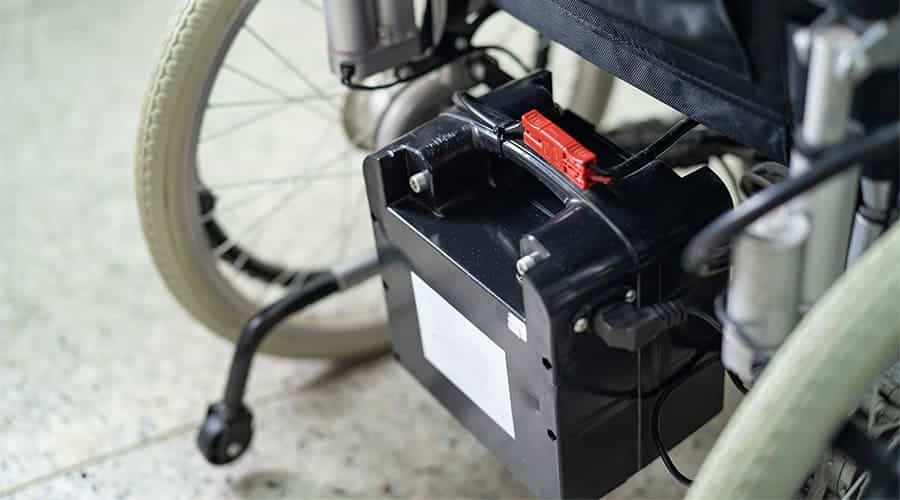
The benefits of using an electric wheelchair
Electric wheelchairs have revolutionized the lives of people with mobility impairments in a number of ways. One of the greatest benefits is that they allow individuals to move around and perform everyday activities more independently than ever before.
One major advantage over traditional manual wheelchairs is that electric models are motorized, which means less strain on muscles and joints while moving about. This can greatly reduce pain and discomfort for those with conditions such as arthritis or spinal cord injuries.
Another benefit is that electric wheelchairs generally offer greater speed and range compared to manually operated chairs. This makes it easier for users to get around quickly, especially when traveling long distances or navigating busy areas like airports or shopping centers.
Additionally, some electric wheelchair models come equipped with advanced safety features like anti-tip technology, which helps prevent falls and accidents. Other features include adjustable seating options, making them more comfortable for extended periods of use.
The benefits of using an electric wheelchair are clear: greater independence, increased comfort, enhanced safety measures and improved mobility overall.

Electric wheelchair battery maintenance tips
Maintaining the battery of an electric wheelchair is crucial for ensuring that it performs optimally and lasts as long as possible. Here are some tips to help you maintain your electric wheelchair’s battery:
Firstly, always charge the battery after each use. This will prevent the battery from draining completely, which can damage its cells and reduce its lifespan. It’s also important to avoid overcharging the battery, as this can cause it to overheat and become damaged.
Secondly, store your electric wheelchair in a cool, dry place when not in use. Avoid exposing it to extreme temperatures or humidity levels, as this can affect the performance of its battery.
Thirdly, regularly check the connections between the battery and charger to ensure they are clean and free from corrosion. Dirty or corroded connections can cause charging problems and reduce the efficiency of your electric wheelchair.
Consider investing in a high-quality charger for your electric wheelchair’s battery. A good charger will help prolong your battery’s life by providing optimal charging conditions while preventing overcharging or undercharging.
By following these maintenance tips, you’ll be able to improve your electric wheelchair’s performance while extending its lifespan for years to come!
How To Get the Most from Your Power Wheelchair Battery
Conclusion
Electric wheelchairs have revolutionized the mobility of individuals with disabilities. The right battery is crucial in ensuring that your wheelchair operates efficiently and effectively. It’s important to consider factors such as battery type, size, capacity, and maintenance requirements when choosing a suitable battery for your electric wheelchair.
By understanding the different types of batteries available and how they work, you can make an informed decision on which type best suits your needs. Regular maintenance of electric wheelchair batteries will ensure optimal performance and longevity.
Remember to always consult with an expert before making any changes or adjustments to your electric wheelchair’s battery system. With proper care and handling, you can expect years of reliable service from your electric wheelchair battery.
FAQs
Where can I test my wheelchair battery?
- Local Mobility Scooter Store: Visit a nearby mobility scooter store for battery testing.
- Wheelchair Service Center: Contact a wheelchair service center to have your battery evaluated.
- Expert Evaluation: Professionals at these locations can check the voltage and condition of your battery and provide guidance on replacement if needed.
How do you find a wheelchair battery charger?
- Online Retailers: Browse websites like Amazon for a variety of options.
- Mobility Equipment Stores: Visit local stores specializing in mobility equipment.
- Manufacturer Websites: Check the websites of wheelchair manufacturers for compatible chargers.
How long do wheelchair batteries last?
- Average Lifespan: Wheelchair batteries generally last between one and two years.
- Factors Affecting Lifespan: Usage patterns, battery quality, and battery type can impact lifespan.
- Average Use: Manufacturers recommend a two-year lifespan based on 2-6 hours of daily use, seven days a week.
- Battery Types: Lower-quality batteries may last around six months, while lithium-ion batteries can last up to 3-5 years.
What voltage are wheelchair batteries?
- Standard Voltage: Wheelchair batteries are typically 12 volts.
- Electric Wheelchair Systems: Most electric wheelchairs utilize a 24-volt system.
- Dual Batteries: Two 12-volt batteries are required to power the wheelchair.
- Reliable Operation: The 24-volt system ensures sufficient voltage for the wheelchair’s motor and electrical components, ensuring smooth and reliable operation.
What kind of battery does a wheelchair use?
- Gel Batteries: Gel batteries are deep cycle batteries with a gel electrolyte.
- AGM Batteries: AGM batteries are deep cycle batteries with an absorbent glass mat.
- Mobility Applications: Both gel batteries and AGM batteries are designed for mobility applications, including electric wheelchairs.
- Reliable Power: Gel batteries and AGM batteries provide reliable power, ensuring long-lasting performance and enabling individuals to travel significant distances on a single charge.
Where to Get Wheelchair Battery Tested?
-
Use a Multimeter: A multimeter is a handy tool that measures electrical current and continuity. It’s like a doctor’s stethoscope, but for batteries!
-
Know Your Battery: Wheelchair batteries are typically 12 vDC each. It’s like having two 12-volt light bulbs in a series – together, they operate on 24 vDC!
How to Find a Wheelchair Battery Charger?
-
Finding a Charger: You can find a wheelchair battery charger online or in stores that sell mobility aids. It’s like hunting for treasure, but the treasure is a charger!
-
Using the Charger: Once you have your charger, position your wheelchair next to a standard electrical outlet, make sure the wheelchair’s controller power is off and the wheelchair is in drive mode. Then, connect the charger to the off-board charger/programming socket on the controller. It’s like plugging in your phone to charge, but a bit more complex!
What Type of Battery Does a Wheelchair Use?
-
Deep Cycle AGM Batteries: These are a type of Sealed Lead Acid (SLA) battery. They’re like the long-distance runners of the battery world – they can discharge and recharge many times over!
-
Gel Batteries: These are also a type of SLA battery. They’re like the sprinters of the battery world – they provide a lot of power quickly!
What Voltage Are Wheelchair Batteries?
-
12 Volt Batteries: Wheelchair batteries are 12 volts each. It’s like having a dozen energy-producing units in one battery!
-
24 Volt System: Most wheelchairs operate on a 24 volt system. That means they need two 12 volt batteries to run. It’s like needing two dozen eggs to bake a big cake!
How do you replace an electric wheelchair battery?
- Access the battery compartment of your electric wheelchair.
- Disconnect the old batteries, taking note of the polarity.
- Remove the old batteries and install the new ones, ensuring correct positioning and polarity.
- Secure the batteries in place using straps or clamps.
- Test the wheelchair’s functionality to ensure proper battery operation.
What are the usage tips for lithium electric wheelchair batteries?
- Charge the battery regularly and avoid full discharge.
- Avoid overcharging or undercharging to prevent damage and ensure a longer lifespan.
- Use a suitable charger designed for lithium batteries.
- Avoid exposing the battery to extreme temperatures.
- Perform regular maintenance, including cleaning the battery contacts and ensuring proper connections.
What is the voltage requirement for electric wheelchair batteries?
-
Voltage Requirement: Electric wheelchair batteries typically operate on a voltage of 12 volts. This voltage level is standard for wheelchair batteries and is compatible with most electric wheelchair models.
-
24-Volt System: However, it’s important to note that most electric wheelchairs utilize a 24-volt system. This means that two 12-volt batteries are required to provide the necessary voltage for the wheelchair to function properly. These two batteries are connected in series, effectively doubling the voltage to create the 24-volt system.
-
Series Connection: Connecting the two 12-volt batteries in series ensures that the voltage adds up, while the capacity remains the same. This series connection is essential for maintaining the proper voltage requirement of the electric wheelchair and ensuring consistent power delivery.
How long does an electric wheelchair battery last?
-
Battery Lifespan: On average, electric wheelchair batteries last for 1-2 years. However, it’s important to note that the actual lifespan can vary depending on various factors, including usage patterns, charging habits, and the quality of the battery itself.
-
Proper Maintenance: Proper maintenance plays a crucial role in extending the lifespan of electric wheelchair batteries. This includes regular charging, avoiding deep discharges, and following the manufacturer’s guidelines for maintenance and care. By implementing these practices, users can help maximize the battery’s performance and durability.
-
Usage Patterns: The frequency and duration of wheelchair usage can impact the battery lifespan. Batteries that undergo frequent and prolonged usage may experience more strain and have a shorter lifespan compared to those used less frequently.
-
Charging Habits: Proper charging habits are vital for maintaining battery health. Overcharging or undercharging can negatively affect the battery’s lifespan. It is important to follow the manufacturer’s recommendations regarding charging times and avoid leaving the battery connected to the charger for extended periods.
-
Battery Quality: The quality of the battery itself can also influence its lifespan. Investing in high-quality batteries from reputable manufacturers can increase the chances of longer-lasting performance and durability.
How does an electric wheelchair battery work?
An electric wheelchair battery works by providing the electrical energy required to operate the power wheelchair. It can be likened to the gas tank of a car, supplying the necessary “juice” for the motors. When the battery discharges, it releases electric current, enabling the wheelchair to move.
What are the maintenance tips for lithium electric wheelchair batteries?
-
Clean the battery regularly: Dust and dirt can accumulate on the battery over time, which may hinder its performance. Regularly cleaning the battery with a soft cloth or brush helps remove any debris and ensures proper airflow, preventing overheating and potential damage.
-
Avoid overcharging: Overcharging lithium batteries can lead to decreased battery life and even safety risks. It is important to follow the manufacturer’s instructions and use the recommended charger. Once the battery is fully charged, unplug it to prevent overcharging and overheating.
-
Store batteries properly: When not in use, it is essential to store lithium electric wheelchair batteries in a cool and dry place. Extreme temperatures and humidity can negatively impact battery performance and lifespan. Additionally, avoid storing the batteries in a fully discharged state, as this can lead to irreversible damage.
What are the charging tips for lithium electric wheelchair batteries?
-
Charge to 100% and drain before charging again: It is recommended to charge the batteries of lithium electric wheelchairs to their full capacity before use. Once fully charged, it is beneficial to drain the batteries partially before recharging them. This practice helps prevent the memory effect, a phenomenon where the battery “remembers” its capacity and may result in reduced overall battery life.
-
Use a surge-protected plug or extension cord: When charging lithium electric wheelchair batteries, it is important to use a surge-protected plug or extension cord. This helps protect the batteries from voltage fluctuations and potential damage caused by power surges.
-
Charge overnight for daily usage: To ensure a full day of wheelchair usage, it is recommended to charge the batteries overnight, similar to charging a mobile phone. This allows the batteries to reach their maximum capacity and provides sufficient power for the day ahead.
How can you prolong the life of your lithium electric wheelchair batteries?
-
Fully charge the batteries daily: It is crucial to fully charge the lithium electric wheelchair batteries on a daily basis. This practice helps maintain the battery’s capacity and prevents it from entering a discharged state, which can lead to decreased performance and reduced overall lifespan.
-
Avoid interrupting the charging cycle: When charging the batteries, it is important to allow the charging cycle to complete without interruption. Interrupting the cycle prematurely can affect the battery’s charging efficiency and potentially lead to imbalanced cells, which can impact overall battery health.
-
Store the batteries in moderate temperatures: Extreme temperatures can have a negative impact on battery performance and lifespan. It is recommended to store lithium electric wheelchair batteries in moderate temperatures to prevent excessive heat or cold exposure, which can degrade the battery’s capacity over time.
Where can I find a manufacturer for lithium electric wheelchair batteries?
-
Online platforms: Websites such as Mobility Scooters Direct, High-Tech Battery Solutions, and DNK Power are excellent resources for finding lithium electric wheelchair battery manufacturers. These platforms provide a variety of battery options specifically designed for mobility scooters and power wheelchairs. By browsing through their product listings, you can compare features, specifications, and customer reviews to make an informed decision.
-
Local mobility equipment providers: Contacting local mobility equipment providers or wheelchair dealers can also lead you to reputable manufacturers of lithium electric wheelchair batteries. These providers often have established relationships with trusted battery manufacturers and can recommend reliable options based on your specific requirements.
-
Direct contact with wheelchair manufacturers: Another approach is to reach out to wheelchair manufacturers directly. They may have partnerships or recommendations for lithium electric wheelchair battery manufacturers that align with their products. This direct contact can provide valuable insights and ensure compatibility between the wheelchair and the battery.
What is the capacity of electric wheelchair batteries?
-
Ampere-hours (Ah) measurement: The capacity of electric wheelchair batteries is expressed in ampere-hours (Ah). This measurement indicates the amount of current the battery can deliver over a specific period. Higher Ah ratings indicate a larger capacity and longer battery life.
-
Typical capacity range: Deep-cycle lead-acid batteries, commonly used in electric wheelchairs, typically have a capacity ranging from 30 to 90 Ah. This means that the battery can power the wheelchair continuously for approximately 3 to 9 hours, depending on factors such as the power requirements of the wheelchair and the terrain it is used on.
-
Factors affecting battery capacity: It’s important to note that the actual runtime of an electric wheelchair may vary based on several factors. These include the weight of the user, the terrain, the speed at which the wheelchair is operated, and any additional accessories or features that draw power from the battery.
What are the benefits of lithium electric wheelchair batteries?
-
High energy density: Lithium electric wheelchair batteries have a high energy density, meaning they can store a significant amount of energy in a compact and lightweight form. This allows users to enjoy longer operating times without the added bulk and weight of traditional batteries.
-
Long service life: Compared to other battery types, lithium batteries have a longer service life. They can withstand numerous charge and discharge cycles before experiencing a noticeable decline in performance. This longevity translates to cost savings and reduced maintenance needs for wheelchair users.
-
High security: Lithium batteries are designed with built-in safety features to ensure secure operation. These features include protection against overcharging, overheating, and short circuits. With enhanced security measures, users can have peace of mind while using their electric wheelchairs.
-
Fast charging: Lithium electric wheelchair batteries can be charged at a faster rate compared to other battery types. This means less time spent waiting for the battery to recharge, allowing users to quickly get back to their daily activities without unnecessary delays.
-
Environmental protection and energy saving: Lithium batteries are more environmentally friendly compared to traditional lead-acid batteries. They do not contain harmful substances like lead or acid, reducing the environmental impact. Additionally, lithium batteries are more energy-efficient, resulting in less energy waste during the charging and discharging process.
Related Posts
- Zapping the Voltage: A Simple Guide to Multimeter Testing for AAA Battery Voltage
- Will solid-state batteries replace lithium?
- Will Batteries Last Longer in the Freezer? Answers to Your Freezing Battery Myths!
- Will batteries last longer in the freezer?
- Why you shouldn’t charge your phone overnight?
- Why would someone put batteries in the freezer?



